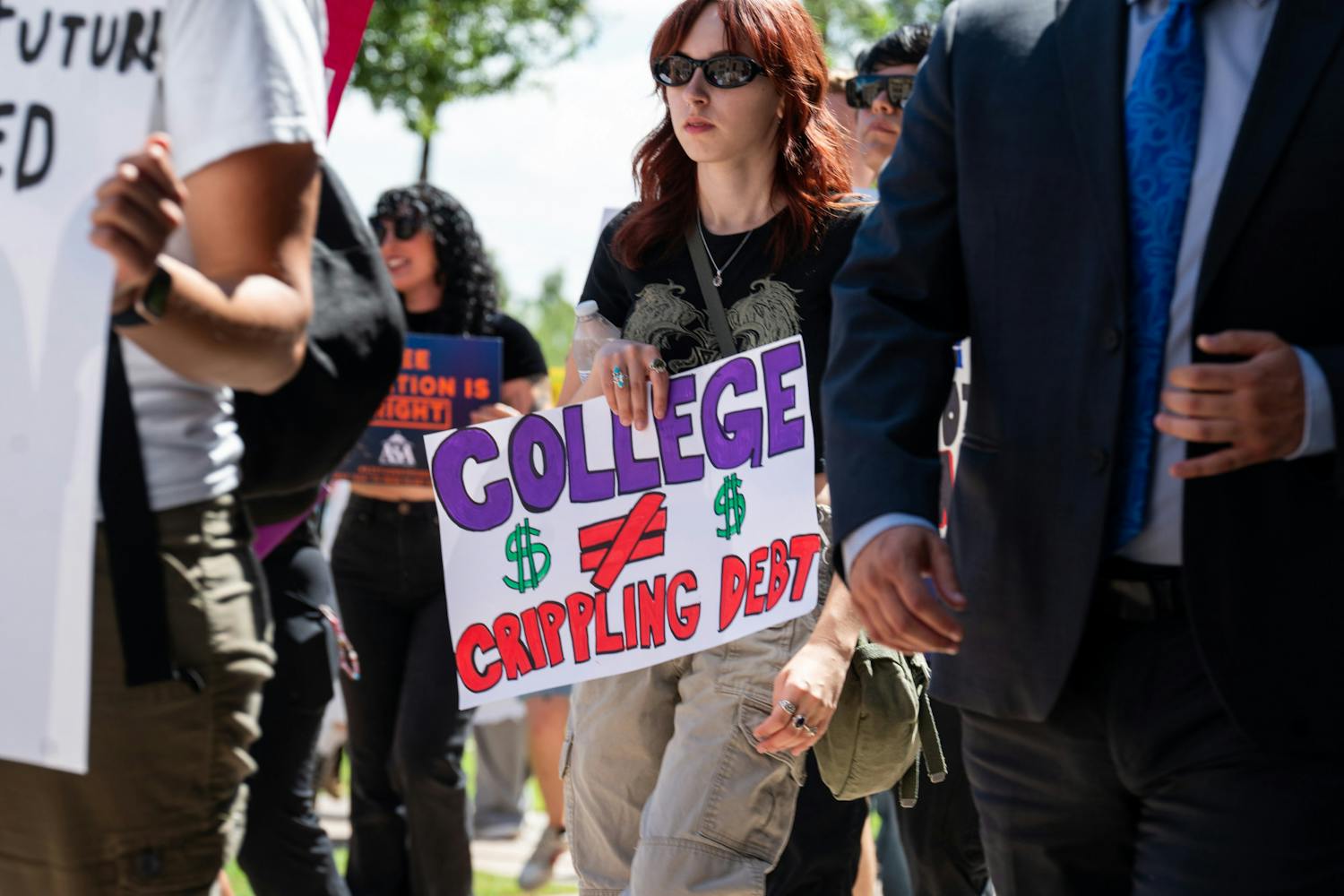After a class on Tuesday morning, Marshall Reaves heads over to the Biodesign Institute to incubate a protein blot.
Reaves is a molecular biosciences and biotechnology senior who works at the institute as a research assistant.
In his three-plus years at ASU, he said he's witnessed firsthand an increase in the quality of the University's research programs.
ASU doubled its research expenditures in the last six years, reaching $203.5 million in fiscal year 2006, according to ASU Research and Economic Affairs.
The increase in funds makes it possible for undergraduates like Reaves to work in laboratories on campus.
ASU, however, still trails far behind UA, which spent more than double the amount ASU did on research.
UA research expenditures topped an estimated $400 million in fiscal year 2006, according to UA's Office of the Vice President of Research, Graduate Studies and Economic Development.
The funding gap between the two universities stems mainly from ASU's lack of a graduate medical program in comparison with UA's research hospital, said Stephen Goodnick, associate vice president for research at ASU.
UA's expenditures on life sciences research alone exceeded $255.6 million in fiscal year 2004, according to the National Science Foundation.
That same year ASU spent $152 million on all research and development, whereas UA's total expenditures were $479 million.
The dollar amount difference, however, has little to do with defining the caliber of ASU's programs, said Jonathan Fink, ASU vice president of Research and Economic Affairs.
"We do not believe the current research expenditures fully reflect the major research investments that have taken place at ASU and in the state of Arizona since 2002," he said.
Investments have included newly recruited research faculty members, expansion of Arizona Technology Enterprises and the initiative Science Foundation Arizona.
New facilities, including the Interdisciplinary Science and Technology buildings at the Polytechnic campus and the Biodesign Institute have drawn more research dollars to ASU in the last few years, Fink said.
Those facilities have also created more opportunities for student research.
At the Biodesign Institute, Reaves is one of more than 90 undergraduates who works in the laboratory. Undergraduate research is one of the highlights of ASU's increase in research spending, he said.
"It's the core of my education," Reaves said. "I still go to class, but then I come here and essentially have a classroom that's always open.
"That's something that wouldn't be possible if I went to a small liberal arts school."
Reaves' research focuses on developing better pharmaceuticals through botanical engineering. Through his work at Biodesign, he said he's witnessed ASU's research programs evolve and expand during ASU President Michael Crow's tenure.
"Even in my three years here, things seem to be ramping up," Reaves said. "Big-name people are coming here and bringing with them research dollars and expertise."
Working in the Biodesign Institute's Center for Glycoscience and Technology, Reaves said he's a room away from some of the greatest thinkers and leaders in his field.
For example, he said, there's Dr. Roy Curtiss, who was awarded a $14.8 million grant to develop a pneumonia vaccine, and Dr. Joseph Wang, who was ranked as the most-cited researcher in engineering in the world by the Institute for Scientific Information.
"The fact that I can knock on the door and these sorts of people are accessible in the next room is awesome," Reaves said. "They're my professors and they're my bosses."
Goodnick said ASU hopes to reach and sustain a level of $400 million per year, within the next five years.
Reach the reporter at: annalyn.censky@asu.edu.



